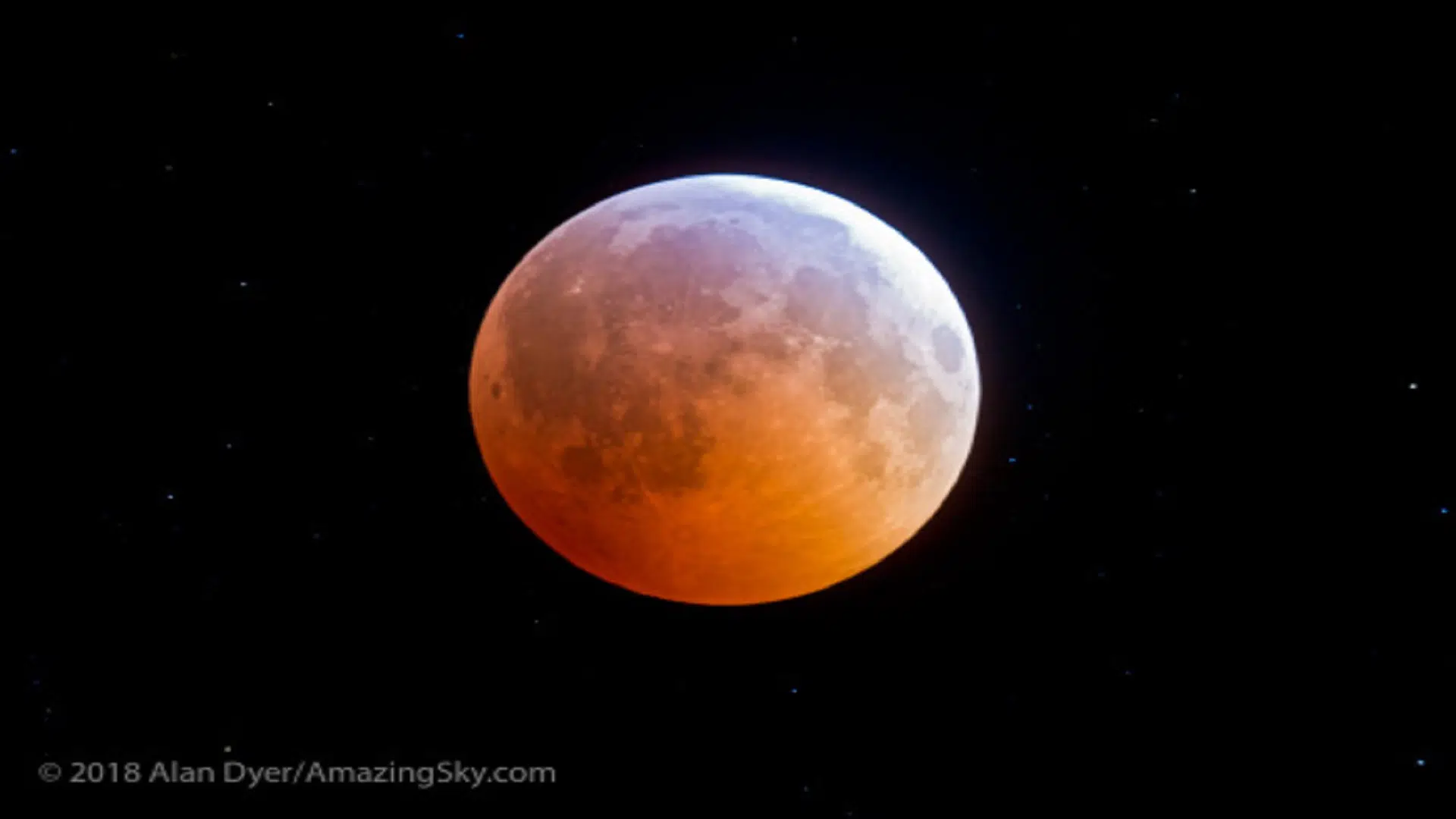
Total lunar eclipse meets supermoon Sunday night
CALGARY — Southern Albertans are expected to get some of the best views in the country Sunday night, (Jan 20), of a total lunar eclipse. That’s according to Neel Roberts, a member of the Royal Astronomical Society of Canada (RASC) in Calgary.
Referred to as a “Super Blood Wolf”, it’s a super Moon which is 14% larger, 30% brighter with a reddish glow. Wolf is its regular name for that month.
The shadowing will start at 7:36-pm and peak at 10:12, finishing at 12:48-am.
The eclipse will be easily visible without a telescope. However, those who want to get a snapshot and aren’t quite sure how to maximize the opportunity, can get stome tips from the “amazimingskyguy“, Alan Dyer, on his website.


